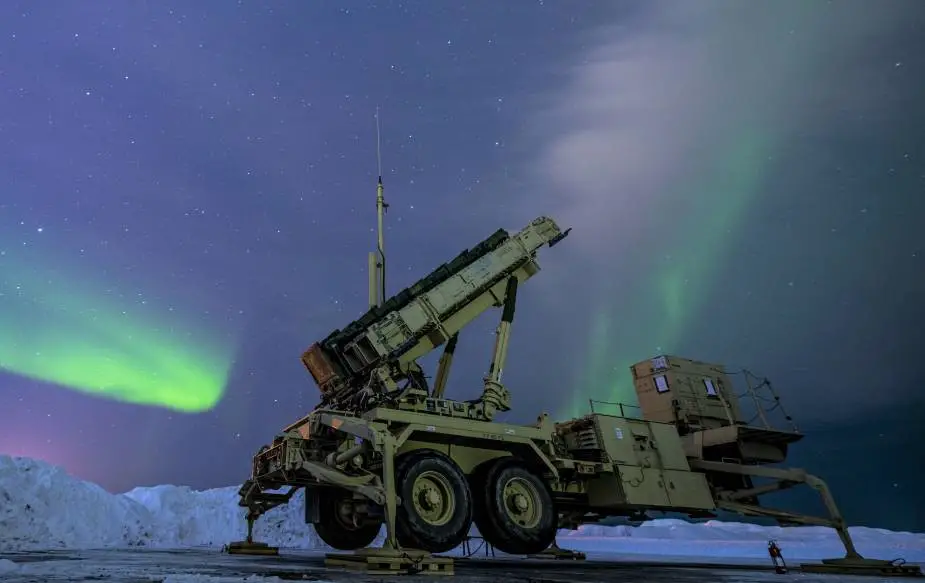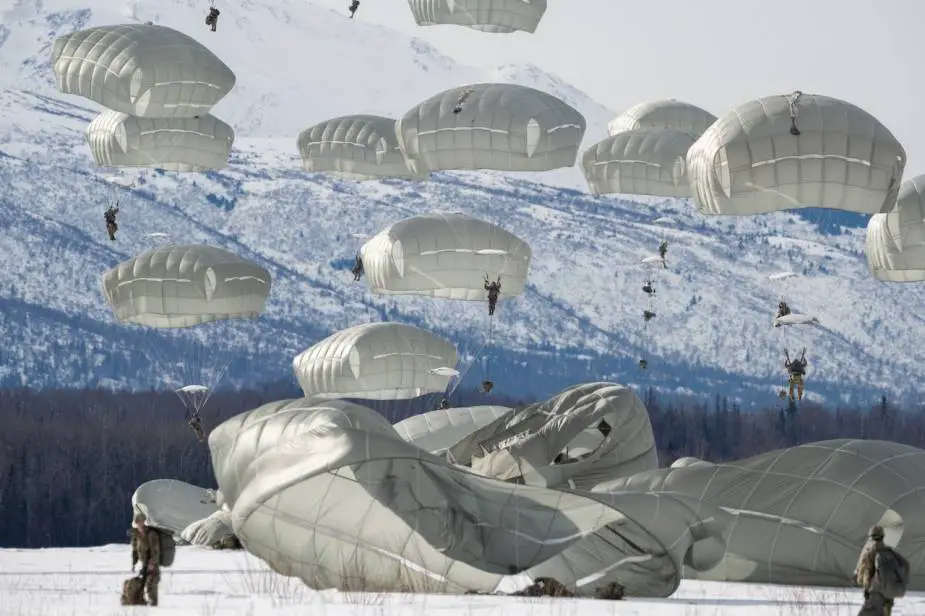US DOD establishes Arctic Strategy and Global Resilience Office
On September 27, the U.S. Department of Defense stated that the United States, being an Arctic power, has established an office to ensure U.S. strategy and policy protect U.S. interests in that crucial region. Jim Garamone, from US DOD, reports.
Follow Army Recognition on Google News at this link

The northern lights glow behind a Patriot launcher during Exercise Arctic Edge 2022 at Eielson Air Force Base, Alaska, March 5, 2022. The equipment—assigned to 5th Battalion, 52nd Air Defense Artillery Regiment—was integrated during the exercise for simulated air and missile defense in austere arctic environments (Picture source: U.S. DoD/Air Force Senior Airman Joseph P. LeVeille)
Iris A. Ferguson is the deputy assistant secretary of defense for the Arctic and global resilience, a new position that signifies the importance U.S. leaders place on the region: "It is a critical region for power projection and also for homeland defense," Ferguson said during a Zoom interview. The importance of the region will only grow as the impacts of climate change accelerate. Temperatures in the Arctic are rising at least three times faster than anywhere else in the world. "We're seeing a lot of geophysical changes that have a dramatic impact on our operations and our infrastructure," she said.
A lot of military infrastructure in the region is built on permafrost foundations, which are melting. "We're working to mitigate that," she said. "There's also coastal erosion that has the potential to impact our radar sites."
The changes are also opening up the area to civilian endeavors — and to strategic competitors, Ferguson said. "We're seeing increased geopolitical activity by Russia, as well as China, in the region," she said.
Russia has the largest land mass in the Arctic, and Russian leaders think of the country as the region's preeminent power, the deputy assistant secretary said. "They have been refurbishing a lot of their airfields and renewing much of their defense architecture across the Arctic region. There might not be conflict now — and there hopefully will never be conflict in the Arctic — but we need to be prepared to operate there."
Russia is only 55 miles away from the United States at the Bering Strait. Russian officials maintain their bases and assets in the Arctic are defensive, yet they arm their icebreakers with Kalibr-K missiles, defense officials have said. "We're increasingly watching the amount of activity that's happening in the Arctic region from them," she said.
China, the United States' other strategic competitor, is thousands of miles from the Arctic. Yet, Chinese leaders have "been trying to insert themselves into the Arctic," she said. "They have called themselves a near-Arctic nation, even though they aren't even remotely near the Arctic."
Chinese leaders are trying to adjust international norms and governance structures in their favor, and they are cognizant of their economic coercion globally and in the Arctic region, she said. "So, we're being very mindful about their activity and in wanting to ensure that our interests are protected in the region," she said.
The Arctic is often overlooked, "but it's a place where we have immense territorial equity, actually, for our homeland defense needs, our ability to monitor and respond to threats, and our capacity to project power," Ferguson said.
The Air Force has based its top-of-the-line aircraft in Alaska because they can be easily deployed to respond to crises throughout the Indo-Pacific. It's also a key refueling stop for aircraft. The Army has established the 11th Airborne Division in the region to develop expertise in Arctic mobility and extreme cold weather operations.
From a military standpoint, the region is a key defense node for the homeland, with missile defense facilities, radars, early warning sites and more throughout Alaska and Canada as part of the North American Aerospace Defense Command.
The latest DOD strategy on the Arctic refers to the region as an avenue of approach to the homeland. "The priorities for that defense strategy are in protecting the homeland, ensuring that our national interests are safeguarded and protected, and working with nations on shared challenges," Ferguson said. "The overarching goal is to ensure we maintain peace and stability in the region."
The Arctic is a huge area with segments in three geographic combatant commands' areas of responsibility: U.S. Northern Command; U.S. European Command; and U.S. Indo-Pacific Command. Ferguson's office is a focal point for Arctic policy. Its initiatives include helping the services prioritize capabilities for the region, developing deeper partnerships with allies and partners, and enhancing Arctic education across the department through its oversight of the newly created Ted Stevens Center for Arctic Security Studies on Joint Base Elmendorf Richardson near Anchorage, Alaska.
"It's important to have an office like this now to try to start laying the groundwork for how we can best prepare ourselves and to know what the challenges of the future may be," she said. "There might not be conflict now — and there hopefully will never be conflict in the Arctic — but we need to be prepared to operate there."

U.S. Army paratroopers land on Malemute Drop Zone during airborne training at Joint Base Elmendorf-Richardson, Alaska, March 24, 2022 (Picture source: U.S. DoD/Alejandro Peña, Air Force)


























